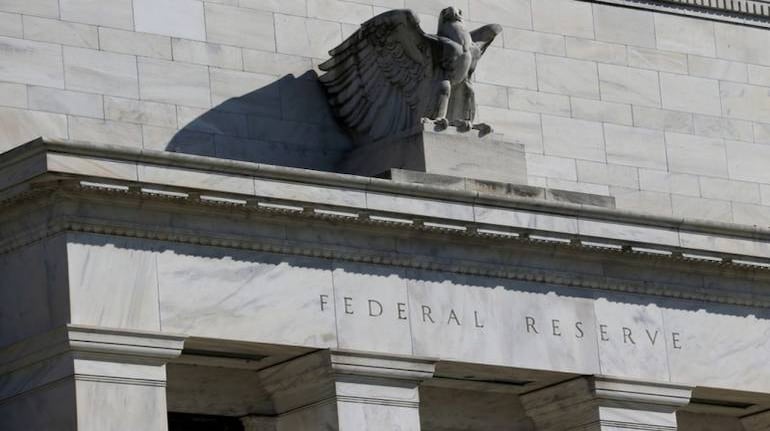



In a move aimed at combating the worst inflation since the 1970s, the US Federal Reserve on March 16 announced a 0.25 percent hike in its bench-mark short-term interest rate.
The decision, taken at the Federal Open Market Committee (FOMC) meeting, marks the first time in more than three years when the key interest rate has been raised. The last hike was approved by the committee back in December 2018.
The 25 basis point-hike will bring the interest rate now into a range of 0.25-0.5 percent.
The Fed's move was widely anticipated as the central bank had indicated that it would begun unrolling some of the measures that were extended in view of the COVID-19 pandemic.
The rate hikes will eventually mean higher loan rates for many consumers and businesses.
Fed policymakers expect inflation to remain elevated and to end 2022 at 4.3 percent, according to updated quarterly projections they released Wednesday. That's far above the 2 percent annual target. The officials also now forecast much slower economic growth this year, of 2.8 percent, down from its 4 percent estimate in December.
Chair Jerome Powell is steering the Fed into a sharp U-turn. Officials had kept rates ultra-low to support growth and hiring during the recession and its aftermath. As recently as December, Fed officials had expected to raise rates just three times this year. Now, its projected seven hikes would raise its short-term rate to 1.875 percent at the end of 2022. It could increase rates by a half-point at future meetings.
Fed officials also forecast four additional hikes in 2023, boosting its benchmark rate to 2.8 percent. That would be the highest level since March 2008. Borrowing costs for mortgage loans, credit cards and auto loans will likely rise as a result.
Powell is hoping that the rate hikes will achieve a difficult and narrow objective: Raising borrowing costs enough to slow growth and tame high inflation, yet not so much as to topple the economy into recession.
Yet many economists worry that with inflation already so high it reached 7.9 percent in February, the worst in four decades and with Russia's invasion of Ukraine driving up gas prices, the Fed may have to raise rates even higher than it now expects and potentially tip the economy into recession.
By its own admission, the central bank underestimated the breadth and persistence of high inflation after the pandemic struck. Many economists say the Fed made its task riskier by waiting too long to begin raising rates.
On Wall Street, the S&P 500 (.SPX) pared gains after the release of the statement and projections to trade up about 0.8%, at the time of writing this report. The yield on the benchmark 10-year Treasury note rose to 2.212%, the highest since May 2019, and the yield on the 2-year Treasury note climbed to 1.9890%, the highest since June 2019. The U.S. dollar index moved from a small loss to a small gain.
With AP and Reuters inputsDiscover the latest Business News, Sensex, and Nifty updates. Obtain Personal Finance insights, tax queries, and expert opinions on Moneycontrol or download the Moneycontrol App to stay updated!
Find the best of Al News in one place, specially curated for you every weekend.
Stay on top of the latest tech trends and biggest startup news.